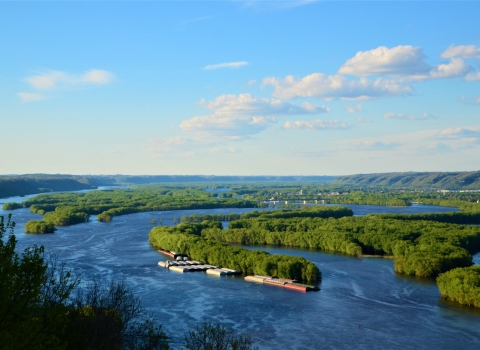OLYMPIA, Washington – Today, U.S Fish and Wildlife Service Director Martha Williams along with the Nisqually Indian Tribe, community members, volunteers and current and former staff gathered to celebrate the 50th anniversary of the Billy Frank Jr. Nisqually National Wildlife Refuge. The celebration honored the close partnerships between the refuge, Tribes and community in the establishment of the refuge and its value to the public and the areas diverse habitats. More than 380,000 people a year visit the refuge.
“This national wildlife refuge national wildlife refuge
A national wildlife refuge is typically a contiguous area of land and water managed by the U.S. Fish and Wildlife Service for the conservation and, where appropriate, restoration of fish, wildlife and plant resources and their habitats for the benefit of present and future generations of Americans.
Learn more about national wildlife refuge was created by grassroots community effort, and in turn, it serves the community that helped to create it,” said Service Director Martha Williams. “Billy Frank Jr. Nisqually National Wildlife Refuge is not only a refuge for migratory birds, but also a refuge for people. An oasis of wildness surrounded by urban development, the refuge is a wonderful example of what we can accomplish in the spirit of conservation with community and great partnerships.”
Billy Frank Jr. Nisqually National Wildlife Refuge was established in 1974 with approval by the Migratory Bird Conservation Commission. It was purchased with Duck Stamp dollars to protect the Nisqually River Delta from development for the benefit of fish, wildlife, and plants, especially migratory birds. The impetus to establish the refuge was a grassroots effort spearheaded by the Nisqually Indian Tribe and the community.
The refuge was renamed in 2016 to honor Billy Frank Jr., a member of the Nisqually Indian Tribe and conservation leader whose activism paved the way for the Boldt Decision, which affirmed Tribes’ treaty reserved rights to half the catch of salmon and steelhead fisheries, with the Tribes and state managing the fisheries together.
The diverse habitats at the refuge host at least 250 species of birds and other wildlife, including insects, fish, amphibians, reptiles, and mammals. Habitat management enhances freshwater wetlands to meet migratory bird requirements but also offers exceptional viewing, nature and landscape photography opportunities. The refuge offers activities for visitors to learn the natural and cultural history of the area with guided walks, seasonal lectures, annual festivals, and environmental education for school groups.
The National Wildlife Refuge System is an unparalleled network of 572 national wildlife refuges and 38 wetland management districts. There is a national wildlife refuge within an hour’s drive of most major metropolitan areas. More than 68 million Americans visit refuges every year. National wildlife refuges provide vital habitat for thousands of species and access to world-class recreation, from fishing, hunting and boating to nature watching, photography and environmental education.
The U.S. Fish and Wildlife Service works with others to conserve, protect and enhance fish, wildlife, plants and their habitats for the continuing benefit of the American people. For more information, visit https://www.fws.gov/about/region/pacific and connect with us on social media: Facebook, Instagram, Twitter, LinkedIn, Flickr, and YouTube.



